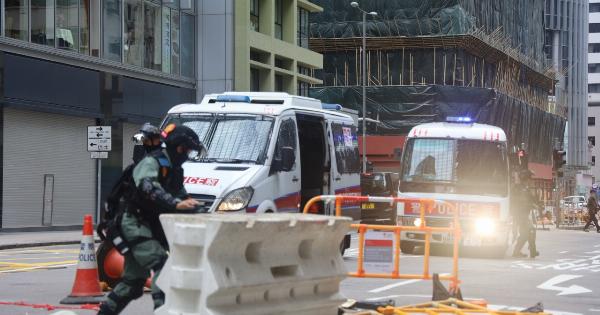As the winter season approaches, it is important to ensure that your heating system is operating optimally to keep your home warm and comfortable.
Unfortunately, heating problems can arise unexpectedly, leading to discomfort and potentially costly repairs. By being aware of the warning signs, you can address these issues promptly and prevent further damage. In this article, we will discuss the top signs of impending heating problems and provide effective ways to address them.
1. Uneven Heating
If you notice that some areas of your home are significantly warmer or cooler than others, it could be a sign of impending heating problems.
Uneven heating can indicate issues such as blockages in the ductwork, imbalanced airflow, or malfunctioning thermostats. To address this problem, start by checking and cleaning air filters, vents, and registers. If the issue persists, it is advisable to call a professional HVAC technician to diagnose and resolve the problem.
2. Strange Noises
Unusual noises, such as banging, rattling, or screeching, coming from your heating system are often indicative of underlying problems. These noises can be caused by loose or damaged components, debris accumulation, or worn-out parts.
Neglecting these noises can lead to further damage and costly repairs. It is recommended to schedule a maintenance visit with a heating technician to identify and address the source of the strange noises.
3. Weak or Insufficient Heat
If you notice a decrease in the heating capacity of your system or if the air blowing out of the vents feels cool instead of warm, it could be a sign of a malfunctioning furnace or heat pump.
This can be caused by issues such as a faulty thermostat, a clogged air filter, or a malfunctioning blower motor. Begin by checking and replacing the air filter if necessary. If the problem persists, consult with a professional technician who can diagnose and repair the issue.
4. Increased Energy Bills
If your energy bills have been consistently rising without a reasonable explanation, it may be due to heating problems.
An inefficient heating system will consume more energy to provide the desired level of warmth, resulting in skyrocketing energy bills. Regular maintenance, including cleaning or replacing air filters, checking for leaks in the ductwork, and calibrating thermostats, can significantly improve energy efficiency and help reduce costs.
5. Frequent Cycling
If your heating system frequently turns on and off, a phenomenon known as short cycling, it is a clear indication of an underlying problem.
Short cycling can be caused by various issues, such as a malfunctioning thermostat, improper heat exchanger operation, or a dirty air filter. In addition to causing discomfort, short cycling can put a strain on your heating system, leading to premature wear and tear. It is best to consult an HVAC technician to diagnose and resolve the problem.
6. Pilot Light Issues
If you have a gas-powered furnace, monitoring the pilot light is essential. A consistently flickering or extinguished pilot light can indicate issues such as a faulty thermocouple, gas valve problems, or a dirty pilot assembly.
It is crucial to address pilot light issues promptly, as a malfunctioning pilot light can pose safety risks. Turning off the gas supply and contacting a qualified technician is the safest course of action in such situations.
7. Insufficient Airflow
If you notice weak airflow from your vents or if certain rooms feel stuffy and uncomfortable, it could be a sign of airflow obstructions or ductwork issues. Insufficient airflow can reduce comfort levels and put undue strain on your heating system.
Begin by checking and cleaning vents, registers, and air filters. If the problem persists, consult with an HVAC professional who can examine and correct the ductwork or identify any other potential causes of restricted airflow.
8. Foul or Musty Odors
Unpleasant or musty odors emanating from your heating system can indicate mold growth or accumulated dust and debris. These issues can affect indoor air quality and potentially trigger respiratory problems.
In such cases, it is recommended to schedule a cleaning and maintenance visit with an HVAC technician. A thorough cleaning of the system, including the ductwork, can help eliminate the odors and improve indoor air quality.
9. Constant Repairs
If you find yourself frequently calling for heating system repairs, it may be a sign that your system is nearing the end of its lifespan.
Older systems are prone to frequent breakdowns and may not provide the same level of efficiency and performance as newer models. Investing in a new, energy-efficient heating system will not only eliminate the hassle of constant repairs but also help you save on energy costs in the long run.
10. Lack of Regular Maintenance
One of the most common causes of heating problems is the lack of regular maintenance.
Neglecting routine maintenance tasks, such as filter replacements, duct cleaning, and system inspections, can lead to various issues and reduce the lifespan of your heating system. To prevent future problems, it is essential to schedule annual maintenance visits with a qualified HVAC technician.
Regular maintenance will ensure that your system operates efficiently and help you identify and resolve potential issues before they worsen.
Conclusion
Recognizing the signs of impending heating problems and addressing them promptly is crucial for maintaining a comfortable home during the winter season.
From uneven heating and strange noises to weak airflow and increased energy bills, each sign indicates a potential issue requiring attention. By following the appropriate troubleshooting steps and consulting with professional technicians when needed, you can ensure that your heating system operates efficiently, effectively, and safely throughout the winter months.





























